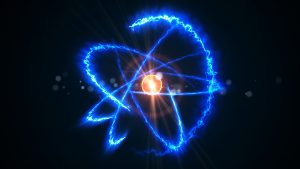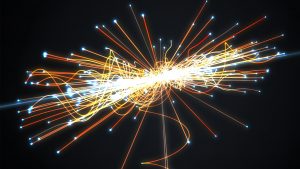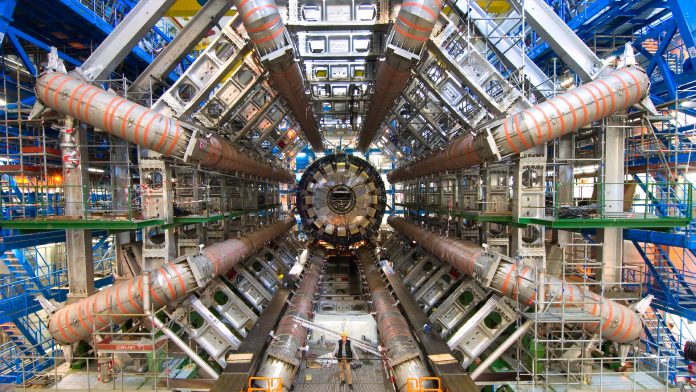Professor Yifang Wang spoke to The Innovation Platform about high energy physics in China and the multifaceted work taking place at the Institute of High Energy Physics of the Chinese Academy of Sciences.
China’s biggest laboratory for the study of particle physics, the Institute of High Energy Physics (IHEP) of the Chinese Academy of Sciences (CAS), hosts its main campus in Beijing. There, and within the other campuses and facilities, the team work to develop a better understanding of the Universe at the most fundamental level – from the smallest subatomic particles to the large-scale structure of the cosmos.
The Innovation Platform spoke to the institute’s Director, Professor Yifang Wang, about some of the research areas that are addressed there – from neutrino physics to glueballs to X-ray astronomy – and the experiments they are involved in, as well as issues such as outreach and funding.
Could you begin by providing a brief outline of your institute’s main goals and ambitions?
The Institute of High Energy Physics of the Chinese Academy of Sciences has some 1,500 employees and 500 students, and we work in three main areas. First, we conduct particle physics experiments. These are undertaken both at places like CERN in Europe, and in our own facilities (we have an e+e- collider located on our main campus, for instance).
The second area is accelerator-based science and technologies. This has seen us build the aforementioned e+e- collider, and we have also recently completed the construction of a spallation neutron source in the south of China in Guangdong, and we are building a new very high energy light source in the north part of Beijing.
The third area is space. We currently have one satellite that is used for X-ray astronomy, and we are planning two other major projects. One is another X-ray satellite, while the other will be used for cosmic ray experiments. We also have a large cosmic ray detector close to Tibet. This sits at a very high altitude – some 4,200m above sea level – and has an area of one square kilometre.
In addition, we have teams working on new applications for the technologies that we have developed in areas such as detectors, as well as X-ray technologies. Applications here include medical devices as well as for safety and inspection, the radiation treatment of materials, etc.

Members of the institute work at the ATLAS and CMS experiments at CERN
What do your particle physics research activities include?
We have three main areas here. One is a tau-charm physics programme, which is running at our accelerator. Here, we are trying to study exotic hadrons – which are beyond the so-called ‘conventional’ quark model – and we are looking for hadrons made up of four, five, or even more quarks, as well as quark-gluon hybrids, and, finally, glueballs (a hypothetical composite particle). Furthermore, we are studying quantum chromodynamics in detail, and are working to develop a low energy precision measurement of standard model parameters.
We also have a neutrino physics programme, and are now finalising the Daya Bay Neutrino Experiment, based at the Daya Bay nuclear power plant in Guangdong province, which has been running since 2011. The project will be concluded by the end of the year.
As we wind Daya Bay down, many of the team have now moved on to work at the Jiangmen Underground Neutrino Observatory (JUNO), a much larger neutrino experiment which is currently under construction at a site that is near the city of Jiangmen in Guangdong province. We hope that construction will be complete by 2022. Once operational, we should be able to run this new detector for over 20 years as we explore neutrino oscillations, solar, supernova, and geo neutrinos, and as we search for sterile neutrinos. This, of course, combines the areas of particle physics and astrophysics.
Finally, we also conduct very high energy experiments, and members of the institute work at the ATLAS and CMS experiments at CERN, and we are also planning a new accelerator for the future Higgs factory.
What will make JUNO unique in comparison to other neutrino experiments?
JUNO is a very special experiment for the future of neutrino physics. Firstly, it has a very long baseline: it uses a very powerful reactor complex located at a distance of 53km to the detector. By making a precision measurement of the reacting neutrino spectrum, we will be able to determine the neutrino mass hierarchy, which as yet has proved to be elusive.
Of course, other neutrino experiments, such as Hyper-Kamiokande (Hyper-K) in Japan and the Deep Underground Neutrino Experiment (DUNE) in the USA will also be able to determine neutrino mass hierarchy, but they are dependent on the value of the CP phase, whereas JUNO is independent of that. We will therefore be able to make a very clean measurement of the mass hierarchy. In principle, it is also hoped that if Hyper-K and DUNE can use our clean measurement of the mass hierarchy then they will also be able to uniquely determine their CP phase. Thus, JUNO is going to be very complementary to projects taking place elsewhere.
In addition, JUNO also has the potential to measure neutrino mixing parameters with a precision of less than 1% (0.5-0.8%), which would be a factor of 10 improvement over existing precision levels, which currently stand at around 5%. This will be very useful for the future of neutrino physics, for example when looking at the unitarity of the three generations of neutrinos to see if there are any extra generations or even if there are sterile neutrinos. It will also be possible to study the non-standard interaction of neutrinos – by looking at the unitarity of the neutrino mixing matrix, you can actually look for new physics.
The JUNO detector can also be upgraded in the future to search for neutrino-less double beta decay. Once this is achieved, JUNO will be the most powerful experiment in the world dedicated to this area.
As you briefly mentioned earlier, you are also active in exploring technology transfer. How is this approached, and what successes have you seen?
We have seen some success here, though that is typically in areas which are less commercially competitive, such as safety inspection technologies for highways or airports – in the latter example, the technologies can be used to look for radiation sources. These are areas where there is little commercial competition and which are not dominated by large scale industries, such as we find in the medical devices sector, where we have experienced only limited success.
Can you tell me a little about the Beijing Spectrometer III (BESIII) experiment – perhaps successes (and challenges) experienced thus far in your efforts to explore physics beyond the Standard Model?
BESIII has been operational since 2008. Since then, we have published some 260 papers in well-renowned international journals. Amongst the important discoveries we have made here is that of a mysterious four-quark particle called Zc (3900) in 2013. We have since gone on to discover many of this particle’s excited states, as well as its neutral partners. These particles together with others, often called x, y, and z particles, have been of interest to the scientific community for the last 15-20 years because they are both beyond the standard conventional quark model and because we still don’t understand what they are, the roles they play, or their properties.
We have also been able to measure a lot of new decay modes as well as new states in the light hadron sector – hadrons which do not have charm and other heavy quarks – many of which could be glue ball candidates or a mixture of quarks and glues. Again, this is an area which is not well understood; it is difficult to tell whether this is a conventional hadron, and we still have to measure a lot of their properties as we try to understand their position in the quark model, their roles, and the nature of conventional versus non-conventional hadrons. We have published many papers in this area, and these are now being used by theorists to better understand the quark model.

Particle and nuclear physics in China have a very good tradition and there is now a relatively large team of physicists – and engineers etc. – who are working to expand the field, whether through continuing international collaborations or via the domestic programmes
Is there a specific focus on theory within your institute?
We do have people working on the quark models in an attempt to better understand the roles of all the different hadrons. We also have a group working on lattice QCD to try to predict these non-conventional hadrons and to try to compare them with existing experimental data.
How important is international collaboration? How do you approach this?
We collaborate with teams and projects all around the world. At CERN, we are involved in the CMS and ATLAS experiments, and we also have people working in the LHCb experiment, which is complementary to BESIII. We conduct collaboration meetings between the two latter experiments, as both often require input from the other.
In the USA, we are members of the Enriched Xenon Observatory (EXO), which is attempting to observe neutrino-less double beta decay, and we have also been involved in developing the Long-Baseline Neutrino Facility (LBNF) experiment. Furthermore, we have also had members of the team involved in the GlueX experiment at the Jefferson Lab.
Some of these activities complement our work on neutrino physics, and some complement our work on hadron physics, and through our international collaborations we are working to develop a fuller picture and a better understanding of the science and activities taking place. Of course, being active on the international stage not only allows us to understand what is taking place elsewhere, but it also helps the scientific community to move forwards as a single entity in our common interests.
How would you characterise the appetite for particle and nuclear physics in China at the moment?
Particle and nuclear physics in China have a very good tradition; senior physicists were able to train the next generation, many of whom remained in China to continue their careers, while others left to work or study elsewhere before returning. This has meant that we now have a relatively large team of physicists – and engineers etc. – who are working to expand the field, whether through continuing international collaborations or via the domestic programmes.
Is fundamental research in these areas well supported financially?
There can always be more funding, of course. Nevertheless, over the last 20 years we have seen a dramatic increase in funding for scientific research – and that is across the board, not only for nuclear and particle physics. In our institute at least, we have seen something like a factor of 10 increase over the last 20 years, per person – research funding some 20 years ago was only around 10% of what we have today. This means that at the international standard, research funding per person in China is now almost on a par with countries such as the USA.
Outreach is also important to the institute. In what ways do you work to engage the public in the understanding of science?
This is an area where we still have much to do. We have approached outreach in a number of ways, for instance we hold an open day each year, where members of the public can visit the institute and listen to presentations and learn more about what we do and what we are hoping to achieve. Much of this is also designed to be interesting for children, too.
We also have a small committee in the Institute working on publicity and on promoting our work via social media channels and so on, and we try to involve the national press when we have a significant success story – such as the completion of the spallation neutron source – to try to reach as wide an audience as possible. However, it can be incredibly difficult to explain the complexities of particle physics experiments to a non-expert. If we try to explain in too much detail, many non-physicists may not understand; but if we do not, then those with a knowledge of physics may feel that we are not being transparent enough or that we have not done things correctly. Communicating physics to a non-specialist audience can thus be much more difficult than communicating a subject such as astronomy, where people can look up at the night sky and try to relate what they have learned to what they can see, or even materials and chemistry, where, for instance, they can learn about new superconducting materials which may come to be used in many of the devices that they use in their everyday lives. Moving forwards, we will therefore be looking at other ways through which we can engage with the public and explain both the importance of fundamental research generally, and the work we are doing at the institute.
Professor Yifang Wang
Director
Institute of High Energy Physics of the Chinese Academy of Sciences
yfwang@ihep.ac.cn
http://english.ihep.cas.cn/
Please note, this article will also appear in the fourth edition of our new quarterly publication.







